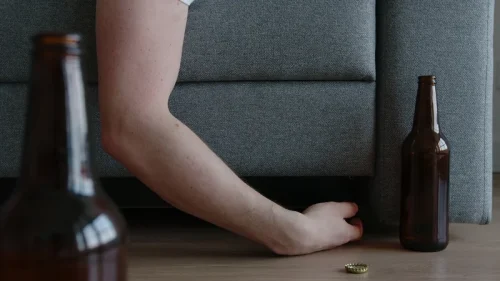What Are The Dangers of Mixing Drugs and Drinking Alcohol?

Impaired driving cases were at an all-time low in 2006, but have since increased – most rapidly in Newfoundland and Labrador & British Columbia. Repercussions of a guilty verdict on an impaired driving charge vary depending on your province or territory. However, no matter where you are, you will be given a large fine or jail time. In Canada, the legal limit for blood alcohol is 0.08; anything above that is a criminal offence.
What the data says about dangerous driving and road rage in the U.S.

Having the number to a local taxi company or using any of the popular rideshare applications directly from your phone are great solutions. No matter your situation and outlook, alcoholism is a condition that can be treated through specialized treatment. If you feel that it’s time to seek help with your alcohol addiction, consider reaching out to a treatment provider. These places have trained professionals who can guide you through the process of withdrawal and recovery from your alcohol addiction.
Support Groups
Drinking and driving increases the risk of accidents due to impaired motor skills, less concentration, slow reaction times, decreased vision, and poor judgment. These side effects put the driver, potential passengers, other vehicles, and pedestrians at risk. The second highest alcohol-related crash risk includes individuals between the ages of 21 to Sobriety 24. In recent years, 21 to 24 year olds had the highest percentage of drivers in fatal crashes with a BAC level of 0.08% or higher – 32%. Many of these cases involved binge drinking, a form of consuming too much alcohol in a short period of time.
- Serious injuries, property damage, or in the worst-case scenario – fatalities, are the major consequences of impaired driving.
- Often called “drunk driving” interchangeably, it refers to operating any vehicle (including bicycles, motorcycles, golf carts, etc.) while impaired.
- In the United States, roughly 28 people die every day in motor vehicle crashes that involve an alcohol-impaired driver.
- And some of those choices are not just about their drinking, but whether they will support their government on their behalf trying to protect the health of their loved ones and their community.
- And we found that in about 80% of studies, they haven’t taken even the smallest account of that problem.
Understanding Alcohol-Related Traffic Laws And Drunk Driving Risks

Drunk driving is often a sign of alcohol abuse or addiction, specifically AUD. When someone consistently gets behind the wheel while under the influence, it illustrates a troubled relationship with alcohol. This approach allows you to focus solely on your recovery without outside distractions. Moreover, you’ll have access to therapy, support groups, and medical care during your stay.
The Impact of Driving Drunk
The most important preventative method is to never, under any circumstances, drink and drive. If you’re driving during a blackout state, your judgment is even more impaired. Not only do you risk accidents, but you risk not remembering important details should something happen while you’re behind the wheel. So if you’ve been involved in a drunk driving accident, you need the help of a lawyer. Never let your friends get behind the wheel after they’ve been drinking.

So support doubled once people became aware of the cancer risk. It’s important consumers are aware, they can make informed choices. And some of those choices are not just about their drinking, but whether they will support their government on their behalf trying to protect the health of their loved ones and their community. So that’s one of the contributions that warning labels could have. So they could calculate at 1, 2, 3, https://ecosoberhouse.com/ 4, 5 drinks a week your risk of dying from an alcohol-related cause and what the impact that would have for the average person on their life expectancy.
If someone drives drunk and survives a crash that injures or kills other people, they must live with the consequences. That emotional burden can be worse than any bodily harm; however, the physical perils of drunk driving are immense too. Impaired driving can cause accidents that lead to paralysis, disfigurement, brain damage, and death. Maybe the car in front of you made an unexpected turn, or you heard a loud bang of a tire blowout; what you do next can make or break it for you and your vehicle. However, if you are drunk and, on the road, you might get into serious trouble. This is because alcohol is reported to cloud judgment and critical thinking, ultimately impacting your motor skills.
- It develops when you misuse alcohol despite knowing its adverse effects.
- Drunk driving is often a sign of alcohol abuse or addiction, specifically AUD.
- Once the substance is out of your system, your vital signs return to normal.
- The largest group at risk for drinking and driving are those who binge drink or are struggling with an alcohol use disorder (AUD).
Treatment and Rehabilitation for Alcohol Dependency

And the health status of people currently drinking will look better and better and better with advancing age compared with their peers who are abstainers. And sometimes that’s taken account of in these studies and often it isn’t. And we found that in about 80% of studies, they haven’t taken even the smallest account of that problem. Mixing alcohol with stimulant drugs like cocaine or amphetamines can mask the depressant effects of alcohol, leading individuals to consume more than their bodies can safely handle.
Patterns of Drinking Associated with Alcohol Use Disorder
Vision impairment affects the ability to judge distances between vehicles on the road. Alcohol abuse can lead to a loss of peripheral vision, which is crucial for safe driving. The greater the alcohol consumption, the more likely it is for vision to consequences of driving drunk include: be impaired.
Alcohol in your system affects your ability to respond to situations. At any given time on the road, there are many hazards drivers must react to, such as animals, the car in front hitting their brakes, debris flying off a truck bed, or pedestrians. Even if you are below the legal limit, driving with alcohol in your system can still be dangerous. Alcohol can start having side effects in your system that impair driving abilities with a BAC as low as 0.01 percent.




